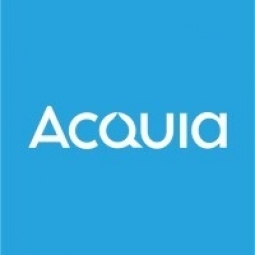下载PDF
Streamlining Content Management and Enhancing E-commerce Experience: A PRADCO Case Study
技术
- 功能应用 - 产品数据管理系统
适用行业
- 水泥
- 电子商务
适用功能
- 销售与市场营销
用例
- 室外环境监测
- 零售店自动化
服务
- 系统集成
挑战
PRADCO Outdoor Brands 是 EBSCO Industries 的一个部门,是户外领域的领先品牌,拥有 5,000 多个产品线 SKU。该公司创建并管理大量品牌和产品内容,以支持营销活动和数字商务。然而,PRADCO 在管理如此大量的内容方面面临着重大挑战。他们的品牌和营销内容存储在只能由其创意团队访问的系统中,导致工作流程效率低下,因为需要数小时甚至数天才能响应文件请求。此外,PRADCO 缺乏一个集中式系统来存储产品数据(例如规格、重量、颜色和 SKU)以及用于创建目录、营销材料和电子商务列表的产品营销文案。该公司主要使用电子表格来手动收集和管理产品内容,这个过程不仅令人沮丧,而且容易出错。
关于客户
PRADCO Outdoor Brands 是 EBSCO Industries 的一个部门,是户外空间中一些最具标志性的狩猎和钓鱼品牌的所在地。该公司管理着跨产品线的 5,000 多个 SKU,并使用大量品牌和产品内容来支持其营销活动和数字商务。 PRADCO 的产品在数百个网站和电子商务渠道上展示,包括亚马逊、沃尔玛、Bass Pro Shops、Cabela's、Academy Sports + Outdoors 和 Dick's Sporting Goods。随着电子商务不断在各行业扩展,PRADCO 致力于提供有影响力且相关的数字体验,以保持竞争力。
解决方案
为了应对这些挑战,PRADCO 于 2015 年实施了数字资产管理 (DAM) 解决方案 Acquia DAM。该解决方案使团队能够在几分钟内找到他们需要的已批准的照片、视频和创意资产,从而显着提高工作流程效率。 2021 年,PRADCO 通过实施产品信息管理系统 Acquia PIM 进一步增强了其产品内容工作流程。借助 Acquia DAM 和 Acquia PIM,PRADCO 可以在一个视图中管理其产品数字资产、数据和营销文案,用集中位置取代孤立的电子表格和存储工具。 Acquia PIM 还允许 PRADCO 构建定制的产品配置文件,捕获每个产品的基本属性,管理针对特定市场定制的产品描述,并通过仅向零售商导出所需的产品副本、信息和资产来简化内容分发。
运营影响
数量效益
相关案例.

Case Study
System 800xA at Indian Cement Plants
Chettinad Cement recognized that further efficiencies could be achieved in its cement manufacturing process. It looked to investing in comprehensive operational and control technologies to manage and derive productivity and energy efficiency gains from the assets on Line 2, their second plant in India.

Case Study
Digital Transformation of Atlanta Grout & Tile: An IoT Case Study
Atlanta Grout & Tile, a Tile, Stone & Grout restoration company based in Woodstock, Georgia, was facing challenges with its traditional business model. Despite steady growth over the years, the company was falling behind the web revolution and missing out on the opportunity to tap into a new consumer base. They were using independent software from different vendors for each of their department information and workforce management. This resulted in a lot of manual work on excel and the need to export/import data between different systems. This not only increased overhead costs but also slowed down their response to clients. The company also had to prepare numerous reports manually and lacked access to customer trends for effective business decision-making.

Case Study
Revolutionizing Construction Equipment Rental: A Case Study on ProsRent and ENO8
ProsRent, a startup that won the 'Best Financial Opportunity' and 'Best Pitch' at CodeLaunch 2016, aimed to revolutionize the way construction professionals source and rent heavy equipment. In the construction industry, project managers and contractors typically rent heavy equipment from supply companies. However, predicting inventory can be challenging, and finding the required equipment at the right time and place can be a hassle. If the preferred vendor doesn't have the required equipment, it results in wasted time and money in searching for it, often leading to higher costs due to non-preferred rates and increased delivery costs if the vendor is located far from the job site. Suppliers, on the other hand, desired access to a wider base of trusted renters that they didn't have to vet themselves and wanted to offer dynamic rental pricing based on demand and availability in their market. ProsRent's challenge was to produce a minimum viable product that was fast and first to market but also strong enough to engender loyalty and repeat business from the target market.

Case Study
IoT Solution Enhances Comfort and Energy Efficiency at Apple Valley Commons Office
Apple Valley Commons, a mixed-use office complex built in 1986, was facing significant comfort and energy efficiency challenges. The building, which houses a variety of businesses, was experiencing extreme temperature imbalances, causing discomfort to employees and clients. Despite outdoor temperatures being consistently high during summers, occupants had to use space heaters to keep warm. The electricity bills from the constant operation of the heat pump were exorbitant. The building's elevator room on the roof was also overheating, reaching temperatures of 130 to 140 degrees, causing the elevator equipment to shut down. The building's existing controls solution did not provide a front end for diagnostics or remote control. The building management was seeking a solution that could address these temperature issues, improve occupant comfort, reduce operational costs, and increase building visibility.

Case Study
Revamping EE's Legacy ERP: A Case Study on BT's Strategic Transformation
EE, even after its merger with BT, was operating its ERP estate on legacy infrastructure, hosted on the premises of a third-party supplier. This outdated system resulted in a volume-based operational model, higher time to market, longer delivery cycles, and unsatisfactory customer experience. BT recognized the need for a strategic transformation of these aging ERP systems and sought a partner who could proactively manage application services. The partner was also expected to handle development requirements associated with application management services, drive accountability, and ownership with a time and target-driven transformation of these services. BT's primary goals were to improve customer experience, reduce cycle time, and measure these improvements with precision.






